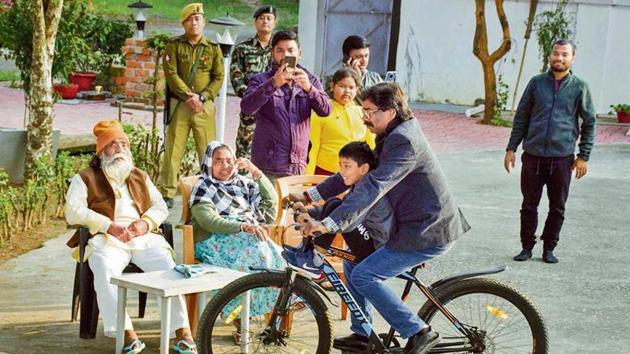Surge in tribal support key to victory for JMM-led alliance
An analysis by regions shows that the biggest reason for the BJP’s political reversal is a surge in support for the JMM alliance in Scheduled Tribe (ST) dominated regions of the state.
The Bharatiya Janata Party (BJP) has won 25 assembly constituencies (ACs) in Jharkhand, 12 less than what it won in the 2014 assembly elections, which it contested in an alliance with the All Jharkhand Students’ Union Party (AJSU). The Jharkhand Mukti Morcha (JMM)-led alliance, which also includes the Congress and the Rashtriya Janata Dal (RJD), has won 47 ACs, 22 more than what these parties won in 2014. To be sure, the JMM contested alone in the 2014 elections.

An analysis by regions shows that the biggest reason for the BJP’s political reversal is a surge in support for the JMM alliance in Scheduled Tribe (ST) dominated regions of the state.
The Trivedi Centre for Political Data (TCPD) database classifies Jharkhand into five regions: Palamu, North Chotanagpur, South Chotanagpur, Kolhan, and Santhal Parganas. These regions have 9, 25, 15, 14 and 18 ACs respectively. North Chotanagpur and Palamu have the lowest share of ST population. South Chotanagpur and Kolhan have the highest share of ST population.
It is in the ST-majority regions that the BJP has suffered the biggest decline in its seat share and contested vote share. (See Chart 1)

Of the 47 ACs which the JMM and Congress have won, over 2/3rd (68%) have come from districts which have a more than 28% ST population, the median ST population in the state’s districts. The BJP has been able to win just 12% of ACs (5 of its 25) in these districts.
The state of Jharkhand was carved out of Bihar in 2000 after a decades-long struggle for a separate tribal homeland.
Since then, the state always had a tribal chief minister, but after the 2014 general election, the BJP bucked the trend by picking Raghubar Das — a non-tribal, other backward class (OBC) face — as the chief minister.
This was part of a strategy by the party of not picking the chief minister from the dominant community in various other states, Maharashtra and Haryana in particular.
Monday’s assembly election results indicated the dominant tribal population didn’t take kindly to Das’ appointment. (See Chart 2)

The results also show that the BJP did not gain much from passing the Citizenship (Amendment) Act, or CAA, which was cleared a day before the third phase of polling. (See Chart 3)

Experts said two important developments connected to the emotive issue of land troubled the tribespeople and turned them against the BJP.
Jharkhand Tribal Advisory Council (TAC) member Ratan Tirkey said the Raghubar Das government’s attempt to amend the two laws -- the Chotanagpur Tenancy (CNT-1908) and the Santhal Pargana Tenancy (SPT-1949) Act -- triggered tribal unrest.
The state government amended the two laws on November 23, 2016 after they were passed in the assembly. The amendment was meant to empower the government to use agricultural land for non-agricultural purposes.
Opposition parties as well as tribal bodies strongly opposed the move, which also opened internal dissent within the BJP, where several ministers and legislators raised their voice against the decision.
Jharkhand governor Draupadi Murmu returned the bill in June 2017.
After this, the government proposed to amend the Right to Fair Compensation and Transparency in Land Acquisition, Rehabilitation and Resettlement Act, 2013, (Land Acquisition Act, 2013) and sought exemption from undertaking mandatory social impact assessment (SIA) study before acquiring land for public purposes. The amendment was cleared in December 2017.
“These two land issues made a major impact in the minds of tribal people. It inflicted a fear among the tribals that their lands will be grabbed if the Raghubar Das government remained in power,” said Udarkant Singh Munda, an tribal rights activist.
Many people in the tribal belt admitted that the government helped develop roads, bring electricity and bolster social welfare schemes.
But they also reported an overwhelming fear of their land being taken away.
“We receiving many things such as toilet, LPG gas and electricity. But, we were offered these freebies only to grab our land.” said Somnath Hansda, 45, of Ghoribad in Dumka district.
Ram Prasad Pahan, a villager of Sigdi village in Ranchi’s Tamar block, said, “We were promised grants under state and Centre-sponsored schemes. But, very few farmers from this area have received grants, despite facing drought this year. So, we had decided to go for alternative party this election.”






